PLAINS GAME HUNTING IN SOUTH AFRICA
Hunting for trophy plains game offers the international hunter an affordable way of enjoying a Safari in Africa. The diversity of species, varied terrain, and the general excitement surrounding the adventure make it a memorable experience.

The black wildebeest (or white-tailed gnu) is considerably rarer than his blue cousin and occurs naturally only in South Africa. Black wildebeest hunts take place on the rolling open plains of the Free State or Eastern Cape province.

The bizarre-looking blue wildebeest makes for a fantastic addition to any trophy collection. The 'poor man's buffalo' is also inherently associated with the African continent and offers a rewarding hunting experience.

The golden wildebeest, with its shimmering coat and regal bearing, stands out as a radiant symbol of rarity and beauty. Its gleaming presence, adorned with elegant horns and confident grace, captivates all who are fortunate enough to behold it.

The common blesbok is endemic to South Africa and is one of the country's most popular plains game species to pursue. While they can be hunted in most areas, they're plentiful on the plains of the Free State.

The white blesbok is pale in color due to a gene mutation, making it a 'morph' species rather than a subspecies. You'll find it in the same areas as the common blesbok, and the same rules apply.

The Yellow Blesbuck is simply a colour mutation of the Common Blesbok and shares the same habitat and behavioural patterns.

The uniquely colorful bontebok was once nearly wiped out in South Africa. With substantial numbers now thriving on game farms and in national parks, this handsome plains game animal makes for a striking trophy.

The handsome bushbuck can make for a surprisingly aggressive and elusive quarry. You'll usually pursue the smallest member of the spiral-horned antelope family in the dense riverine forest or where he hides in thickets.

Hunting the bush pig is akin to pursuing the European wild boar. Bad-tempered and hostile, the bush pig is typically hunted after dark when he is most active. Be wary of his short (but razor-sharp) tusks.

Caracals are often hunted with dogs in the Eastern Cape or from a blind, making for a unique and exciting nocturnal pursuit. This shy, lynx-like cat has a beautiful pelt and makes for a handsome full-mount trophy or skin.

The common reedbuck is usually hunted in areas with floodplains, like the Eastern Cape and the eastern Free State. This stately plains game species is very fond of water and often encountered near waterholes.

The tiny blue duiker makes for a very unusual trophy. The blue duiker is the smallest member of the duiker family and one of Africa's tiniest antelope species. The hunt can be challenging, as they often hide in dense undergrowth.

The grey or common duiker is a shy, small species of antelope usually encountered on his own. The solitary antelope is mostly active in the late afternoon and early evening when he ventures out to browse.

This attractive mini-antelope species clocks somewhere in size between its blue and grey cousins. You'll pursue the secretive red duiker in dense forests, coastal brush, or mountain slopes with thick brush.

The Cape eland is the largest of Southern Africa's antelope species. This ox-like animal is an impressive addition to any trophy collection, occasionally weighing over 2000 pounds.

This European import can also be hunted in South Africa. Exclusively a grazer, the fallow deer adapts easily to most habitats and can be pursued in various hunting areas, from the mountainous to open plains.

The world's tallest land mammal makes for a unique hunting experience and an awe-inspiring trophy of which you'll be indelibly proud. The giraffe's keen senses and formidable legs augment an already-challenging hunt.

The stately gemsbok is synonymous with the Kalahari Desert and is known for its remarkable ability to adapt to harsh, arid environments. Its masked face and striking spear-like horns make it a spectacular trophy animal.

The Cape Grysbok is a small, shy antelope with a thick-set body and a coarse coat of hair. A mingling of white and reddish hair on the back and sides.

Sharpe's Grysbok is a shy antelope, which is slightly smaller than the Cape Grysbok, and which has a thick-set body and a rich rufous-coloured coat 500 mm at the shoulder and weighs eight kg as an adult.
A mingling of white and rich rufous hair on the back and sides gives this species a wiry grizzled appearance. Only rams have horns, which are 60-100 mm in length.

The Grey Rhebuck is usually pursued by serious hunters looking for something unique to add to their collection. He prefers mountainous areas, and his straight, upright horns distinguish him from the similar-looking reedbuck.

The Impala is the South African hunter's bread-and-butter and a great introduction to hunting in the African bushveld. They occur in abundance across the country and make for excellent game meat.

Black Impala is a variation/mutation in colour from Common Impala. Trophy hunting for the Black Impala is for the hunter who wants a unique and rare trophy.
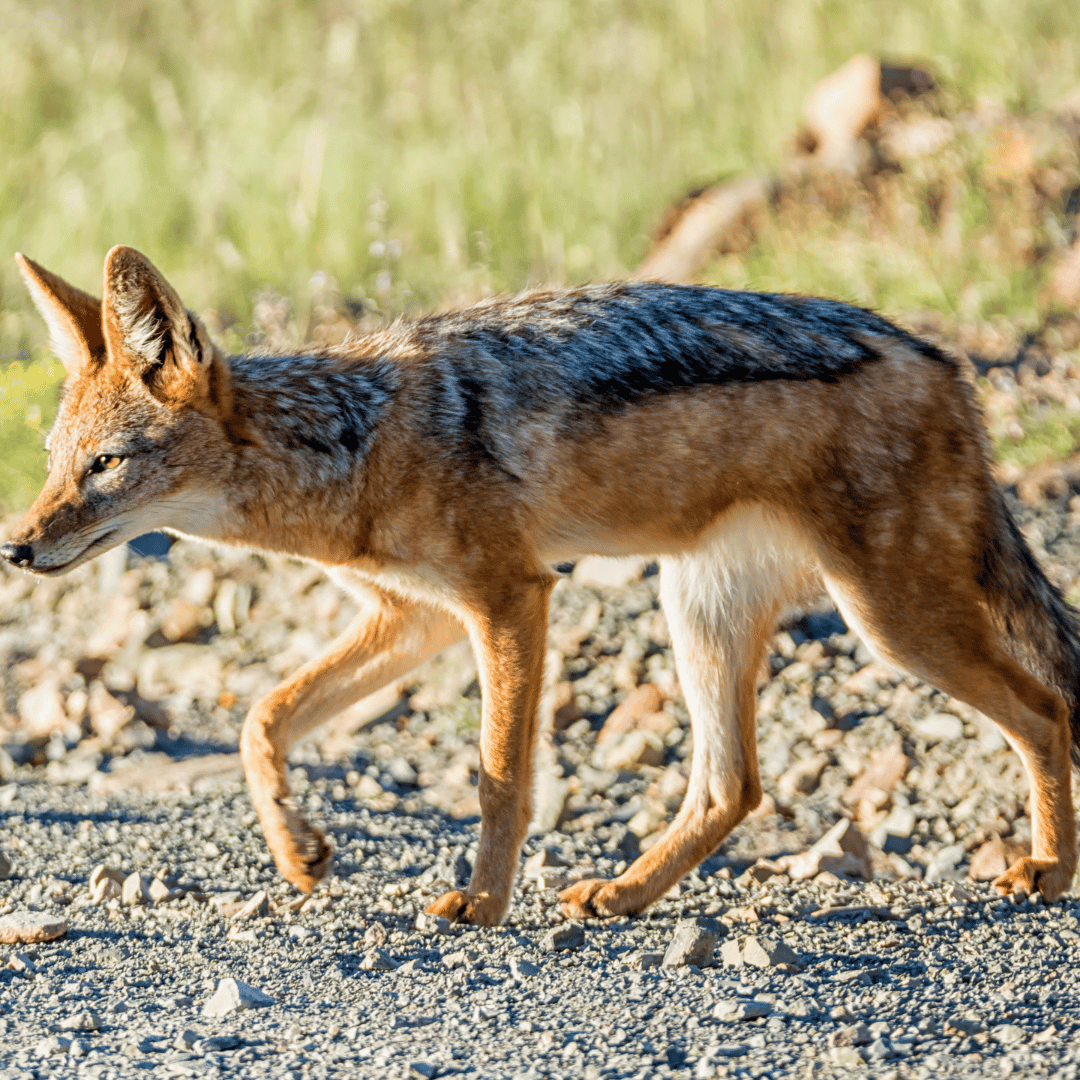
The black-backed jackal is a coyote-like animal that is both an accomplished predator and a prolific scavenger. Jackals are usually hunted opportunistically while tracking or pursuing other animals.

The klipspringer is an attractive little antelope aptly named for its rather riveting ability to 'spring' from rock to rock. You'll typically pursue the klipspringer in areas with rocky or mountainous terrain.

There are two subspecies of Greater Kudu; Southern Greater kudu and Eastern Cape Kudu. The Eastern Cape kudu only occur in the Eastern Cape of South Africa. They are slightly smaller than the Greater Kudu, and have smaller horns. Their coat is also darker.

The greater kudu is a large antelope species sought-after by local and international hunters alike. Its spectacular spiral horns and handsome 'body paint' make it an incomparably special trophy.

The Red Lechwe is one of the more unique antelope species available for hunting. Though usually found on the floodplains of Botswana and northern Namibia, ranching has made it available for pursuit in South Africa.
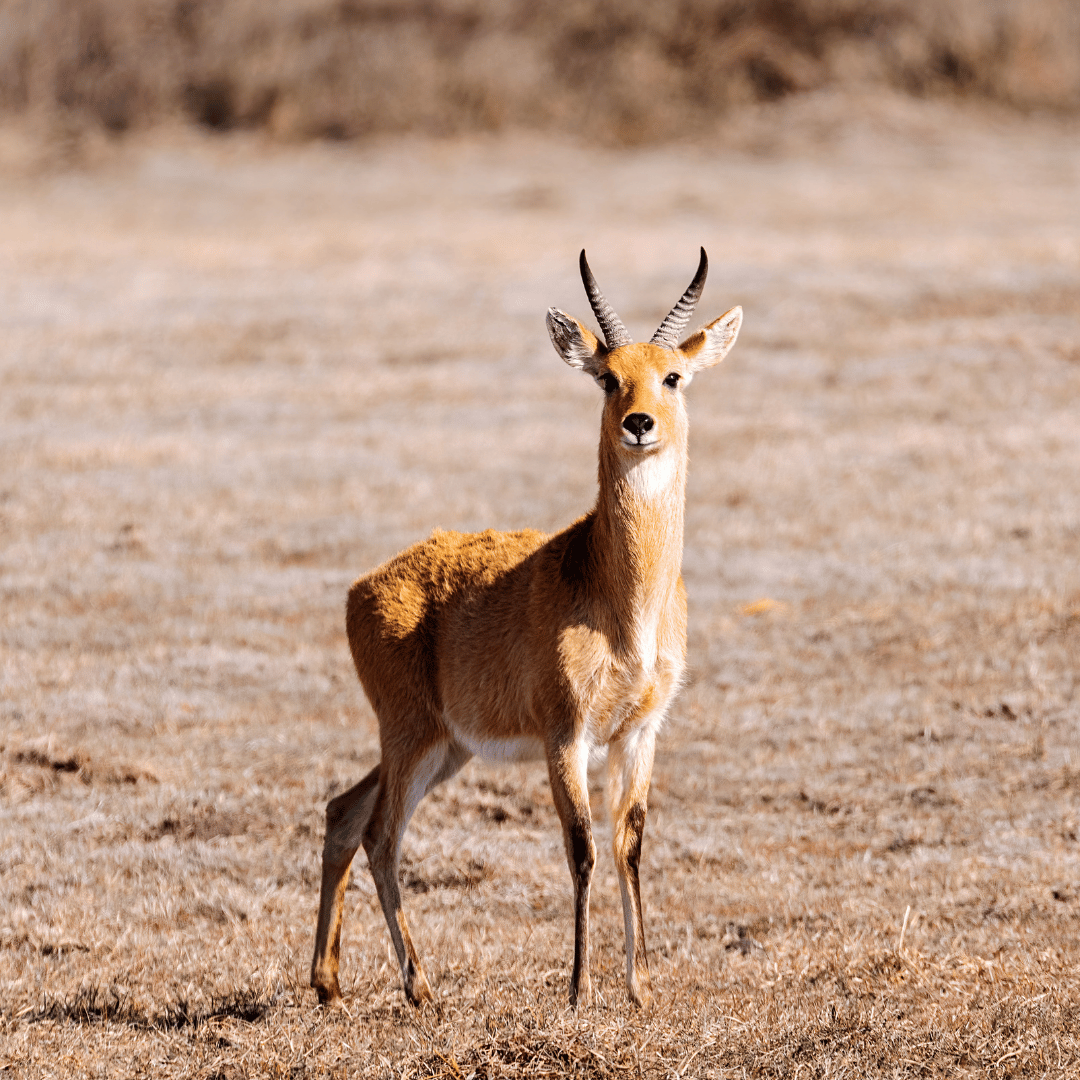
The Mountain Reedbuck offers a very challenging yet rewarding hunting experience. Some climbing and a keen eye are required, as they rarely come out into the open. The Eastern Cape is prime mountain reedbuck territory.

The Nyala is more elusive than its spiral-horned cousin, the Kudu, which will require patience and grit from its pursuer. Once you have him, however, he'll likely be the most beautiful trophy in your collection.

The little Oribi is slightly larger than the Steenbok but far less common. It's typically only on the lists of the most serious African trophy hunters looking to augment their collection with something special.

Ostriches make for one-of-a-kind trophies. The world's most giant bird might be flightless, but he is incredibly swift on his long legs. Ostriches are usually hunted on open plains, like in the Free State or Kalahari.

The unique-looking Red Hartebeest is known as the 'Harley Davidson' amongst hunters due to the strange shape of its horns and elongated face. The Red Hartebeest is a startlingly swift - but perhaps fatally inquisitive - antelope.

Second in size only to the eland, the Roan Antelope is a rare and much-desired trophy animal that is now more widespread due to ranching. You'll find Roan in open, grassy areas ideal for grazing.

The Sable Antelope is striking because of its stark black and white coloring and stunning backward-curving horns. He makes for an aggressive quarry but a trophy that may just become your favorite in your collection.
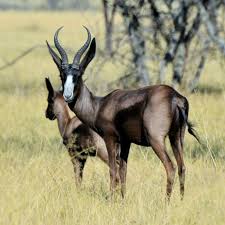
The unique-looking Black Springbok is a 'morph' species of the common springbok, appearing darker in color due to a gene mutation. You'll find him on the same open plains and arid areas as his 'common' cousin.
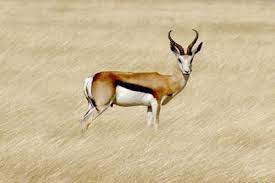
The sprightly Springbok is South Africa's national animal and high on the list for many avid plains game hunters. It occurs commonly on game farms in the eastern Free State and Eastern Cape, where the land is grassy and open.

The Copper Springbuck is not a subspecies, but a color phase of the South African Springbuck. Copper Springbok is a sociable herd animal and belong in semi-desert areas, including the Karoo and Kalahari Desert.

The white springbok offers an exciting color variation on the common springbok - an attractive and truly unique addition to the trophy room. He is pursued in the same manner and areas as the common springbok.

The tiny Steenbok is a sought-after member of the 'Little Five' antelope species and makes a great full mount trophy. They are highly cautious with keen senses - and you'll need to be light on your feet during the hunt.
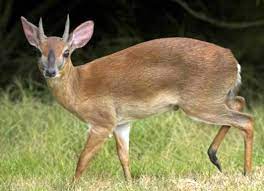
This tiny and elegant antelope is one of the smallest antelopes. Suni’s prefer thick bush as their natural habitat. Because of its low numbers the Suni is under very strict protection. At the sight of danger, the Suni will stand very still but when the danger is too close they will take off in a flight.

The tsessebe is one of the continent's fastest antelopes and decidedly strange-looking. Despite his speed, he is also curious - his moment of hesitation before taking flight is the perfect moment to take your shot.

The waterbuck makes for a stunning trophy with his luxurious shaggy coat, white-circled rump, and forward-facing horns. You'll never hunt this large antelope species far from a water source or floodplain.

Warthogs are very popular amongst hunters and are typically pursued in the Lowveld and Bushveld regions. Its razor-sharp upper tusks are considered for trophy assessment, and these weapons make him formidable in the field.

The common or Burchell's zebra is another popular plains game pursuit. You'll find him in the grasslands or wooded savanna. Males and females are often difficult to distinguish - rely on your PH to be sure.

The mountain zebra is Burchell's less common cousin. It is distinguished by its lack of shadow stripes and bare white bellies. He is most commonly pursued in the Eastern Cape province of South Africa and neighboring Namibia.
NEED MORE INFO ?
Leave your details and we will reach out to you to answer all your questions.
Newsletter
Subscribe for regular specials & updates.
Created with © systeme.io




